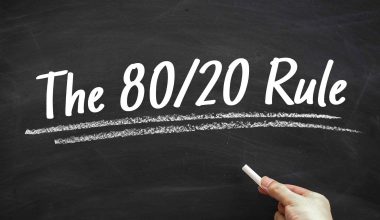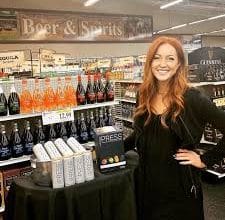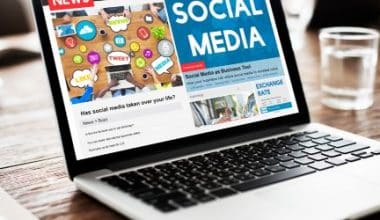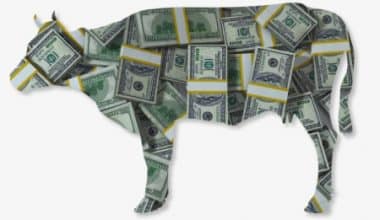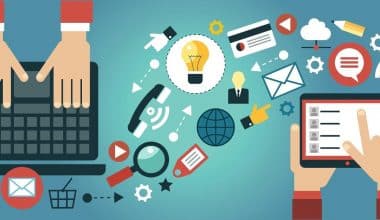You need to build a sales funnel to draw in visitors and turn them into customers, whether you run an offline or online firm. The main objective of your sales funnel is to lead customers through the various stages of the purchasing process until they are prepared to make a purchase. In this article, we will be looking into the stage, examples, and how to create a sales funnel for free.
Enjoy the reading as I take you through this information.
What Is Sales Funnel
A sales funnel, also known as a buy funnel, visually illustrates the consumer journey from awareness to action. Every sale starts with a huge pool of potential consumers and concludes with a much smaller group of buyers, according to the adage “funnel.” “Marketing funnel” or “revenue funnel” are other names for it. Regardless of whether a customer is brand loyal or is learning about your company for the first time, a sales funnel may be able to show you where they are in the purchasing process.
The marketing at the top of the funnel draws potential customers to your company. All of the steps in your sales process that come before the sale are included in the center of the funnel. The last purchase is made at the bottom of the funnel.
Every business experiences this similar process in one manner or another. Your sales funnel might look like this:
- Retail store
- Sales team
- Website
- Personal consultation
Your sales funnel can include any marketing channel. Additionally, your funnel may span numerous channels.
Importance of A Sales Funnel
A sales funnel represents the stages customers will take to buy your good or service. You might be able to learn more about how your sales funnel functions and where it falters by taking a closer look at it. Additionally, it will assist you in locating any gaps in the various phases of your sales funnel (i.e., where prospects drop out and do not convert into customers).
You may affect how prospects proceed through it and whether they choose to make a purchase by being aware of your sales funnel. Then you can use your funds to support marketing initiatives that have a wider audience, create messaging that is more suited for each stage of the sales process, and increase the percentage of prospects who become paying customers. Additionally, it will assist you in comprehending what clients are doing and considering at each stage of the sales process.
Sales Funnel Stage
The four stages of the sales funnel are when a prospect first learns about your product or service and when they decide whether or not to purchase it. A prospect’s thinking goes through four stages, each necessitating a particular style of communication. The term AIDA makes it simple to remember the four steps and describes how it works. :
#1. Awareness.
In the sales funnel, awareness is the first stage. The person is unfamiliar with your goods or services. They may have learned about you from recommendations made by friends and family, exposure on social media, or whatever advertising you have done. As an alternative, it’s possible that a prospective customer discovered your company by reading your blog, seeing an advertisement, or finding your website through a Google search.
By clicking on a link and purchasing your product, the prospect might turn into a customer if the timing is right. You’ll probably need to persuade the potential client to visit your store or website, get in touch with you by phone or email, or take part in some other activities linked to your business.
#2. Interest.
By contacting the business for further information, the potential client shows greater interest in it. This stage of the process may involve the price, additional investigation into the many possibilities the company offers, and sales proposals. A customer is no longer progressing up the funnel if they choose not to make a purchase.
#3. Decision
The decision stage is the third stage in the sales funnel. At this time, the consumer may be contemplating a number of options and is ready to make a purchase. They will now evaluate costs, packages, and other aspects to determine which choice is best for them.
Use this opportunity to provide your strongest case. When a customer places an order, they can get free delivery, a coupon for a discount, or an extra bonus item, for instance. Increase the likelihood that someone will accept and proceed with your offer by making it alluring. The prospect may be persuaded to act by your content. The conversion of prospects into paying clients can be accomplished through calls, sales pages, and webinars.
#4. Action
Action is the sales funnel’s last stage. Once a potential consumer has used your product or service, they become a client (or they decide to leave without making a purchase). If the customer purchases something, they are now a part of the ecosystem of your business.
The process continues even after the transaction is finished. You should be able to count on customers’ recurring business if you satisfy them. Your writing should aim to draw in more devoted readers. For instance, express gratitude for their purchase, solicit feedback, provide assistance following the sale, request them to join your email list, or sign them up for a rewards program.
What Are the 7 Layers of the Sales Funnel?
Here is a brief explanation of a seven-stage sales funnel to get you started:
- Awareness.
- Interest.
- Evaluation.
- Decision and Negotiation.
- Sale.
- Renewal.
- Repurchase
Best Sales Funnel Examples
To learn more about the sales funnel, here are some examples of where you can start to help you become visible. These examples of sales funnel are detailed below on how it works.
#1. Netflix
The most popular paid subscription video streaming service, Netflix lets its subscribers view a huge selection of critically acclaimed films, TV series, documentaries, and more on millions of internet-connected devices. Their website is also quite straightforward. There isn’t a lot of ambiguous copy, and you are aware of exactly what you are purchasing. Depending on the movies and television shows that are being advertised, they alter their background image. They also provide a risk-reversal option that lets you renounce at any time without being bound by a contract.
PayPal, credit cards, and gift cards are all available as payment methods. Every type of credit card is accepted. To avoid being locked in, you can also go back and update the information. Security is emphasized, which is fantastic because people are risk-averse by nature. Using Netflix is easy. The final consumer is the main focus. And with the least amount of language necessary, they provide clean, concise answers to customer inquiries.
#2. HELPSCOUT
You are invited to view a demo video from Help Scout. Animations and designs have an emotive quality. Additionally, a few company logos have been inserted above the fold to highlight social proof for website visitors. The website is easy to read and has decent contrast. Nothing is preventing the copy from being read. There isn’t any untidy background. There is a very obvious CTA and a ton of social proof. Even if it’s below the fold, it’s still prominent enough to be seen.
They have a wonderful blog. They provide excellent resources with beautiful graphics. Overall, they contain a ton of high-quality stuff. It has a really clear layout and is quite original. Finding out more about the group is simple. Additionally, they have a compelling lead magnet with a call to action for their toolset.
#3. Planscope
Planscope assists you in taking complete charge of your agency, bringing your staff and clients together, securing more contracts, and learning how to improve your company. Their website is really simple to use. The fact that Planscope requires a credit card is one of the reasons it functions so successfully. No tire kickers participate, and those that sign up are exceptionally qualified.
#4. Crazy Egg
Big sales funnel for Crazy Egg. They have a fantastic blog with excellent material. Their blog is essentially where their sales funnel begins. This indicates that inbound traffic sources like Google are the main source of their traffic. As you scroll down the page, a prominent call to action (CTA) banner follows the top right corner of the page. Crazy Egg avoids overwhelming the customer with information by keeping it brief. Customers can read the material and understand what they’re getting before providing their email addresses.
#5. SharpSpring
Since our last article, SharpSpring, formerly known as Perfect Audience, has made several design changes. Their pricing page is divided into sections for agencies, large corporations, and small businesses. They have solid social proof overall, a decent design overall, and they even include case studies and whitepapers on the “Resources” page. Their pricing page isn’t really clear, on the other hand. Although it may seem that the fixed charge for a small business is $399 at first sight, that isn’t necessarily the case.
How to Create a Sales Funnel for Free
A sales funnel must be built to guide prospects from their first point of contact to the point of purchase. Then, by monitoring the quantity of behavior and engagement at each level, the location of the prospect in the sales funnel may be ascertained, as can the efficiency of the funnel. A sales funnel can be created in a number of different ways, and different industries and enterprises have their own unique types of sales funnels. To create a sales funnel for your company for free, adhere to these steps:
#1. Build A Landing Page.
On the landing page, a prospect typically has their first opportunity to discover more about your business, its products, and services. Users can access your landing page by clicking on an advertisement or link on a social networking website, downloading an e-book, or signing up for a webinar.
Your landing page should give a brief overview of your company and the unique benefits of your product or service. Because it could be your final opportunity to leave an impression on visitors, the copy on the landing page needs to be appealing and convincing. It should also have a way to get in touch with the prospect in order to keep emphasizing your worth to them.
#2. Send in A Strong Proposition.
For a potential customer’s email address, you must exchange a prize. A free e-book or whitepaper with insightful and important information is one option.
#3. Be the First to Act.
Now that they have shown enough interest to give you their email address, present the prospect with content that educates them about your product or service. Once or twice a week should be the goal for regular communication, but not so frequently that it becomes monotonous or uninteresting. Make sure the information meets their main needs and allays any potential objections.
#4. Complete The Deal.
Give the prospect your best offer, one that they will find difficult to reject, to close the sale. You may provide a free trial in this case of a sales funnel, a product demonstration, or a special promo code, to create for instance.
#5. Carry on With the Process.
At this point in the sales funnel, the prospect has either decided to buy or not. In every situation, you should keep fostering partnerships. If the prospect ultimately chooses to work with you, maintain the relationship by educating the prospect about your products or services, staying in touch with them frequently to encourage loyalty and offering top-notch service to keep them as valued clients. If the potential buyer decides not to buy, send them additional emails to stay in touch. Continue attempting to turn them into clients by using a variety of email nurturing series.
#6. Simplify Your Sales Funnel.
Even when a sales funnel has been built for free, your work is never done. Your sales funnel should be regularly improved and optimized, and you should look for any areas where prospects are being lost. Pay close attention to where prospects move from one stage of the sales funnel to the next. At the very top of the funnel, begin. Examine each piece of content’s effectiveness. Are you attracting enough potential customers with your own content? Your copy’s call to action (CTA) should entice potential buyers to click. If they aren’t doing that or if a specific piece of content is receiving fewer clicks on the CTA, redesign that element or try something different.
What Are The 3 As in Sales?
The problem is not the sales profession per se; it is your perception and experience of the sales process that is impacted by your attitude, approach, and behavior toward it.
What Are the 5 Pillars of Sales?
They have a strong work ethic, empathy, perseverance, passion, and persistence.
What Are the 5 Sales Techniques?
Here are five sales strategies that every salesperson needs to know:
- Features & Benefits.
- Needs & Solutions.
- Social Selling.
- Active Listening.
- Warm Calls.
What is B2B Sales Funnel?
A stage-by-stage model of the buying process for B2B prospects is known as a sales funnel.
What Are the Six Selling Steps?
The six steps that comprise the selling cycle are as follows:
- Make a pitch to your next prospective client or consumer.
- Initiate communication.
- Make sure potential customers or clients are qualified.
- With your presentation, win the prospects over.
- Address the worries of the potential client or consumer.
- Complete the sale.
Related Articles
- What Is A Sales Funnel?: How to create a sales funnel(Stages, Examples, And Strategies)
- SALES LEADS: How to Generate Sales Lead for any Business, Explained!!!
- What is Sales Forecasting? Methods and Real-world Examples
- MARKETING VS SALES: What Are the Major Differences?


